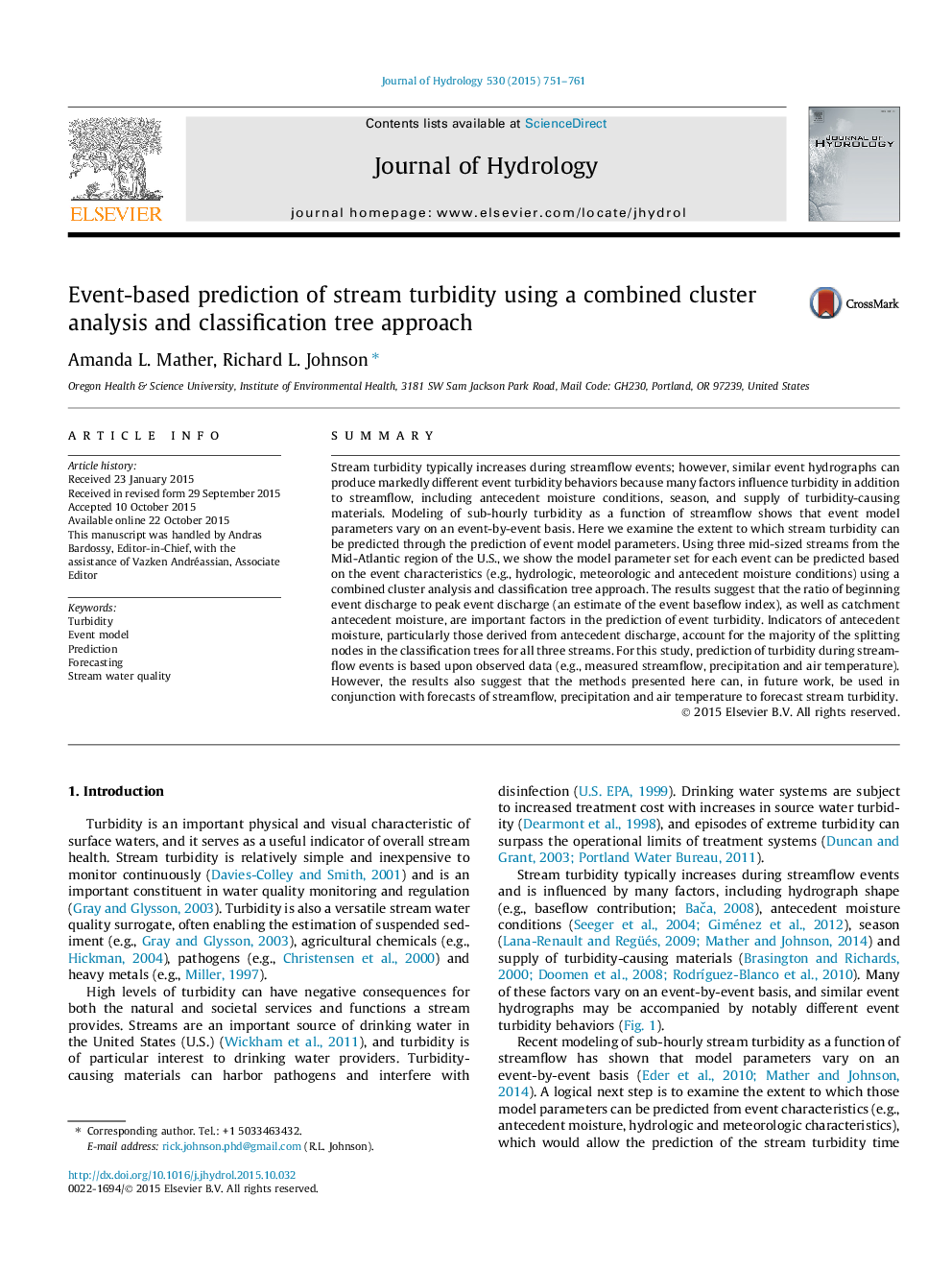| Article ID | Journal | Published Year | Pages | File Type |
|---|---|---|---|---|
| 6410278 | Journal of Hydrology | 2015 | 11 Pages |
â¢Event turbidity was predicted for three Mid-Atlantic streams.â¢Model parameters were predicted based on event hydrologic characteristics.â¢Ratio of beginning to peak discharge was most significant predictor for two streams.â¢The majority of classification tree predictors were antecedent moisture indicators.â¢Antecedent discharge was a better predictor than antecedent precipitation.
SummaryStream turbidity typically increases during streamflow events; however, similar event hydrographs can produce markedly different event turbidity behaviors because many factors influence turbidity in addition to streamflow, including antecedent moisture conditions, season, and supply of turbidity-causing materials. Modeling of sub-hourly turbidity as a function of streamflow shows that event model parameters vary on an event-by-event basis. Here we examine the extent to which stream turbidity can be predicted through the prediction of event model parameters. Using three mid-sized streams from the Mid-Atlantic region of the U.S., we show the model parameter set for each event can be predicted based on the event characteristics (e.g., hydrologic, meteorologic and antecedent moisture conditions) using a combined cluster analysis and classification tree approach. The results suggest that the ratio of beginning event discharge to peak event discharge (an estimate of the event baseflow index), as well as catchment antecedent moisture, are important factors in the prediction of event turbidity. Indicators of antecedent moisture, particularly those derived from antecedent discharge, account for the majority of the splitting nodes in the classification trees for all three streams. For this study, prediction of turbidity during streamflow events is based upon observed data (e.g., measured streamflow, precipitation and air temperature). However, the results also suggest that the methods presented here can, in future work, be used in conjunction with forecasts of streamflow, precipitation and air temperature to forecast stream turbidity.
